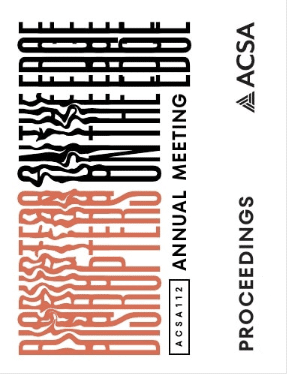Author(s): Adam Dayem
In discipline and practice, architecture works with conventions of perspective and orthographic projection inherited from the Renaissance. Perspective projections produce illusions that simulate vision, orthographic projections set out measurable dimensions that allow three-dimensional buildings to be constructed from scaled two-dimensional drawings. These two modes of projection may seem to be at odds with each other, one emphasizing the art of architecture in qualitative illusory effects, the other emphasizing the technology of architecture in quantitative measure. But of course, many of the most compelling architectural drawings incorporate both the ‘art’ and ‘technology’ of architecture. This type of hybrid drawing, that is partly illusionistic and partly measurable,1 is particularly useful in imagining what a building could be without losing track of the measurements of the physical world in which it must exist.
https://doi.org/10.35483/ACSA.AM.112.78
Volume Editors
Germane Barnes & Blair Satterfield
ISBN
978-1-944214-45-6

 Study Architecture
Study Architecture  ProPEL
ProPEL 
